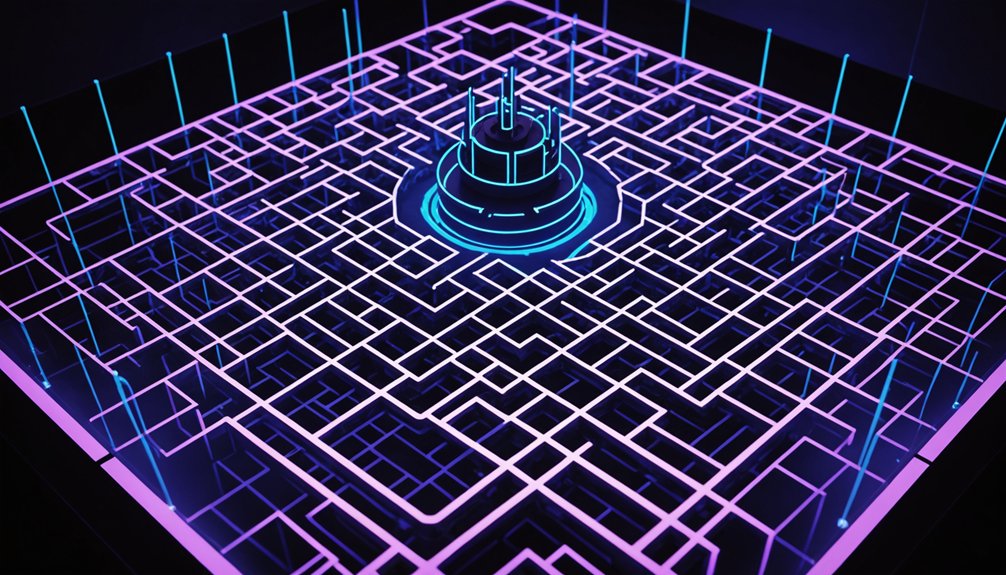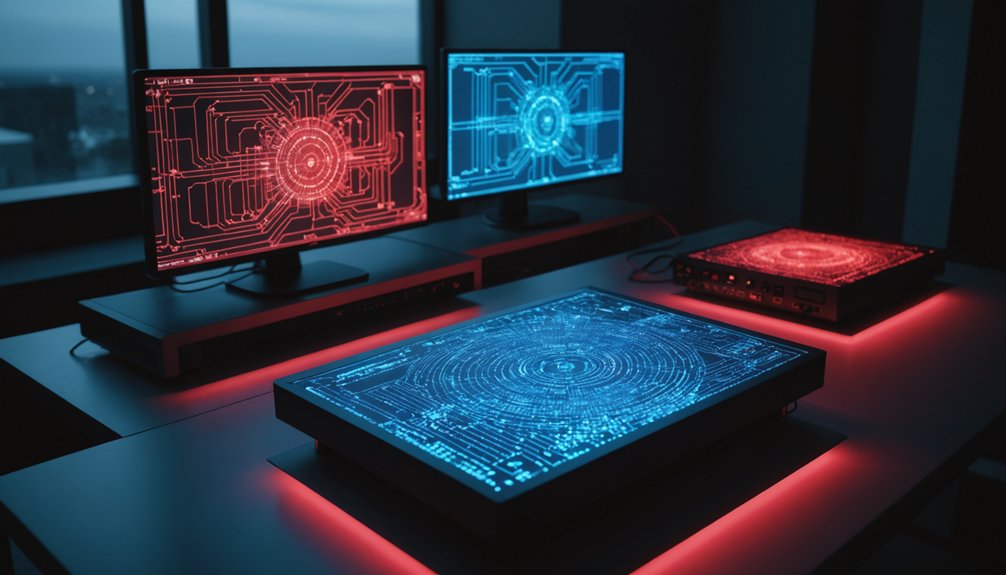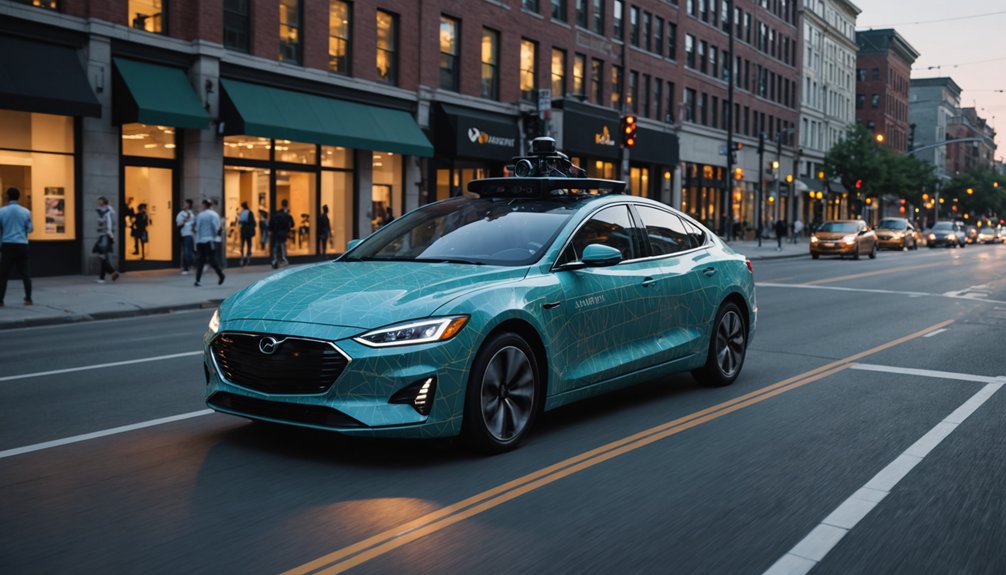Neural Architecture Search automates the discovery of ideal neural networks. No more tedious manual tweaking. It systematically explores design possibilities using reinforcement learning, evolutionary algorithms, or Bayesian methods. The process evaluates models against specific requirements like accuracy and memory use. Recent approaches like DARTS allow for faster, more efficient searches. NAS-designed networks often outperform human creations, despite the hefty computational costs. The technology keeps improving, making it increasingly accessible to researchers everywhere.

While humans struggle to design ideal neural networks through tedious trial and error, Neural Architecture Search (NAS) does it automatically. This technology is revolutionizing how we build neural networks, eliminating countless hours of manual tweaking and optimization.
Let’s face it—humans aren’t great at exploring thousands of architectural possibilities. NAS doesn’t have that problem.
NAS operates on a simple premise: let machines find the best neural network design. It works by defining a search space of possible architectures, then systematically exploring this space using various algorithms. The controller proposes candidate models, trains them, evaluates their performance, and uses this feedback to guide future iterations. Pretty clever, right?
Different approaches power NAS systems. Reinforcement learning rewards the controller for finding better architectures. Evolutionary algorithms mimic natural selection, with the fittest models surviving to the next generation. Bayesian optimization makes smarter choices about which architectures to try next. Game theory has even entered the chat as a novel optimization strategy. Early research by Zoph et al. used RNN controllers to generate promising architectures sequentially. One-shot approaches like DARTS and NAO allow for simultaneous evaluation of multiple architectures, leading to faster convergence to optimal designs. The options are diverse.
Like modern self-attention mechanisms in transformer models, NAS represents a significant leap forward in automated AI development. The framework consists of multiple components working together. The model itself, the search space defining possible architectures, trainer code for evaluation, inference devices to measure performance metrics, and reward functions to rank candidates. It’s a complex system with a simple goal: find the best architecture possible. Similar to transfer learning techniques, NAS can leverage pre-existing knowledge to improve efficiency and performance.
The benefits are obvious. NAS creates state-of-the-art models for image classification, object detection, and segmentation. It optimizes for multiple constraints simultaneously—accuracy, latency, memory usage. The resulting networks often outperform human-designed ones. Shocking, I know.
But NAS isn’t perfect. The computational requirements can be massive. Searching through thousands of architectures isn’t cheap or quick.
Still, as technology advances, these costs are dropping. The trade-off is becoming increasingly worthwhile. For businesses and researchers needing cutting-edge neural networks without the headache of manual design, NAS is the future. No question about it.
Frequently Asked Questions
How Does NAS Compare to Manual Architecture Design?
NAS beats manual design on efficiency and exploration capabilities.
It’s faster, requires less expertise, and can discover wild architectures humans might miss.
But there’s a catch—computational costs are sky-high.
Manual design still wins sometimes, especially when domain knowledge matters.
Results can be inconsistent.
NAS optimizes for specific metrics like speed or accuracy.
Recent advances have made it cheaper, but you still need serious computing power.
The gap is closing, though.
What Computational Resources Are Needed for Effective NAS?
Effective NAS demands serious computational muscle. High-performance GPUs are non-negotiable.
The resource requirements? Astronomical. Organizations often turn to cloud services like AWS or Google Cloud because who has that kind of hardware just lying around?
Distributed computing helps speed things up by spreading the workload.
The environmental impact? Significant. Energy consumption through the roof. That’s the price of automation – literally and figuratively. Not exactly a budget-friendly endeavor.
Can NAS Be Applied to Non-Vision Deep Learning Tasks?
Yes, NAS can absolutely tackle non-vision tasks, though it’s been less explored there.
The technology works for NLP, audio processing, and even graph neural networks. It’s just harder. Non-vision data comes in varied formats, requiring different architecture designs. The search space gets tricky to define.
Computational costs remain a challenge too. Despite these hurdles, researchers are making progress. The field’s expanding beyond its computer vision comfort zone—slowly but surely.
How Are Nas-Discovered Architectures Transferred to Different Domains?
NAS-discovered architectures get transferred across domains through several methods. Domain adaptation techniques minimize distribution shifts.
Previously built performance predictors save time when evaluating architectures in new tasks. Supernets allow easy sampling of sub-networks for different domains.
Some researchers use evolutionary algorithms to propose promising architectures based on prior knowledge. Gradient-based optimization helps fine-tune models for new tasks.
Maximum Mean Discrepancy reduces distribution differences. It’s not always smooth sailing though—domain shifts remain challenging.
What Are the Ethical Considerations in Automated Architecture Design?
Automated architecture design raises serious ethical flags.
Bias in algorithms? Real problem. Systems might favor certain design styles while ignoring cultural nuances.
Privacy concerns abound with data collection.
Then there’s transparency—designers and users deserve to know how decisions get made.
Job displacement? Yeah, that’s happening.
The whole intellectual property thing is messy too. Who owns AI-generated designs anyway?
Human oversight remains essential, despite the tech’s impressive capabilities.




